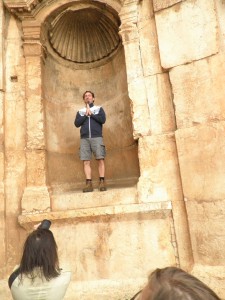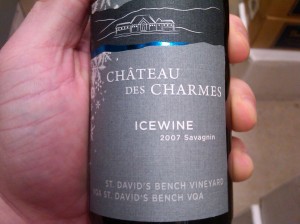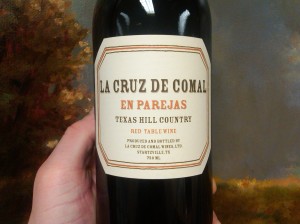“Where?” was always the first question.
“Beirut” I would say.
“You mean like Beirut Lebanon?” they would ask.
“Yes, exactly” I would say, followed by a long pause.
“Is it safe?”
I think I had this conversation with no less than 3,000 people prior to my departure to Beirut. However, visiting Chateau Musar was so important to me I would have gone during the war. Having been to many questionable places during questionable times, I was not worried. My lack of fear was substantiated when I arrived and saw the beauty and felt the amazing hospitality of the Lebanese people. Upon arriving we ventured out to ride in a Ferris wheel that would be shut down in the US but it had an amazing view of the Mediterranean and of Beirut.

George Washington Gale Ferris Jr. would be proud.
You cannot write about Chateau Musar without waxing poetically about Serge Hochar. Many have written of his effusive personality and still many more about his approach to winemaking and his connection to his wines. I will limit my waxing (here) to a few things about Serge that made the largest impression on me. First, in Beirut, Lebanon, Serge Hochar drives a brand new Cadillac Sedan, like he stole it. He is an intense man who lives every day with passion. He proudly wears a lapel pin that denotes his status in the Knights of Malta. He is one of a kind, and I am a better person for knowing him.

He's Bad, He's Nationwide
Our trip over the Lebanon Mountains to the Bekaa was complete with a great story from Tarek Sakr, the winemaker at Chateau Musar. He told us of one vintage where he was bringing grapes over the mountains to the winery. A fighter jet blew up a bridge directly in front of him, and he narrowly escaped with his life. How many winemakers in the western world have a story like that?
The Bekaa was the breadbasket of Rome – a large expansive valley with fertile soils. Most of the Musar vineyards are located in the Bekaa. Some are located in the flat of the valley and others located in the mountains in tiny plots harvested by local villagers and brought to the village on donkeys.
Serge and Tarek allowed us to taste the components of Chateau Musar thinking it would give us a grasp of why they use each one. They were right. Tasting the Obaideh and Merwah separately you see what they add to the final blend. Obaideh is a lot like Viognier. It tends toward lower acid and is floral, waxy and viscous. Merwah is higher in acid and crisp but not as viscous as Obaideh. The year 1986 was the first vintage of Musar Blanc with Obaideh. Before that it was all Merwah. However, the current “recipe” for Musar Blanc was not in place until 1993-1995. In 1975 Serge arrived at the 1/3, 1/3, 1/3 model for Chateau Musar. He found this while trying to express what he calls the Lebanese and not Bordelaise style of wine. Tasting the 2009 and 2010 components, you see that the Cinsault adds a fresh strawberry and has high acid. The Cargnan has a very dense color with an intense iron rich finish. The Cabernet Sauvignon drives the tannin structure and has a milky finish.

Tarek explains all
We visited three amazing sites in Lebanon that should not be missed. Baalbeck is located in the area of the Bekaa that is held by Hezbollah. Going through the checkpoint we were advised by Gaston and Tarik not to take pictures. Baalbeck is home to an amazing ruin, which includes a temple to Jupiter, Venus and of course Bacchus. The Romans called Baalbeck Heliopolis or “City of the sun” although strangely the day we were there it rained.

Riesling-Meister Grieco a Bacchus understudy
We also visited Byblos, the oldest continuously inhabited city in the world, where archaeologists unearthed 17 different civilizations. It is sad to see that all of this stopped in the 70’s with the war. The castle built by the crusaders is a testament to recycling. There are also Phoenician temples, an amazing Roman amphitheater that looks out to the Mediterranean, and a Byzantine church.

Wish you were Roman?
We also raced to the Jeita Grotto late one afternoon where we were able to explore the upper and lower cave. You ride a gondola to the upper cave. After you walk the length of the amazing upper cave a small train takes you to the lower cave, which is explored via a flat-bottomed boat. What a set of amazing treasures this country has.
The treasure that we originally came to see and experience was Chateau Musar itself. With Serge as our guide we explored the area where they age Arak in amphora and the barrel room. But what we had all come to see was the vast amount of bottle storage that puts any house in Rioja to shame (more on that to come.) Serge will not tell the number of bottles he has stored under his winery! We explored two floors, which seemed about 5,000 square feet apiece, and there was rumor of another several floors under the castle thatnwe did not have time to explore. I could not begin to speculate on the number of bottles that we saw. They included wines back to the 50’s made by Serge’s father Gaston.

The Riojanas would be proud.
For geeks what follows here is a timeline as far as I understand it. Please leave comments below if you have something to add.
1930- Chateau Musar Founded
1933- First Vintage
1959- Serge takes over winemaking.
1963-1964- In Bordeaux with Emile Peynaud
1964-1970- Wines made in “Bordeaux expression”
1970-1974- Serge searching for Lebanon expression
1971- Wine first exported to US via Houston
1975 -Serge uses Cabernet, Cinsault and Carignan blend for the first time.
1977- War caused a market shift. Domestic market disappeared and more wine was held back.
1979- opened the UK market
1995- “Recipe” for Blanc discovered 2/3 Obaideh and 1/3 Merwah
Vintages Chateau Rouge not produced
62/63/65/71/73/76/
1992 (Distilled for Arak)
1968 Made but not sold
1984 Was produced but not yet released
Vintages Chateau Blanc not produced
60/62/63/65/66/68/71/73-74/76-79/82-85/87
Musar Blanc Anomalies
1954- First wine bottled by Serge (Very Good)
1975- No oak used and not released (A delicious wine)
1980- New oak experiments began
1981- Only Merwah
1986- Only Obaideh
1991- Spent two years in all new oak and shows it
1992- Only Obaideh









